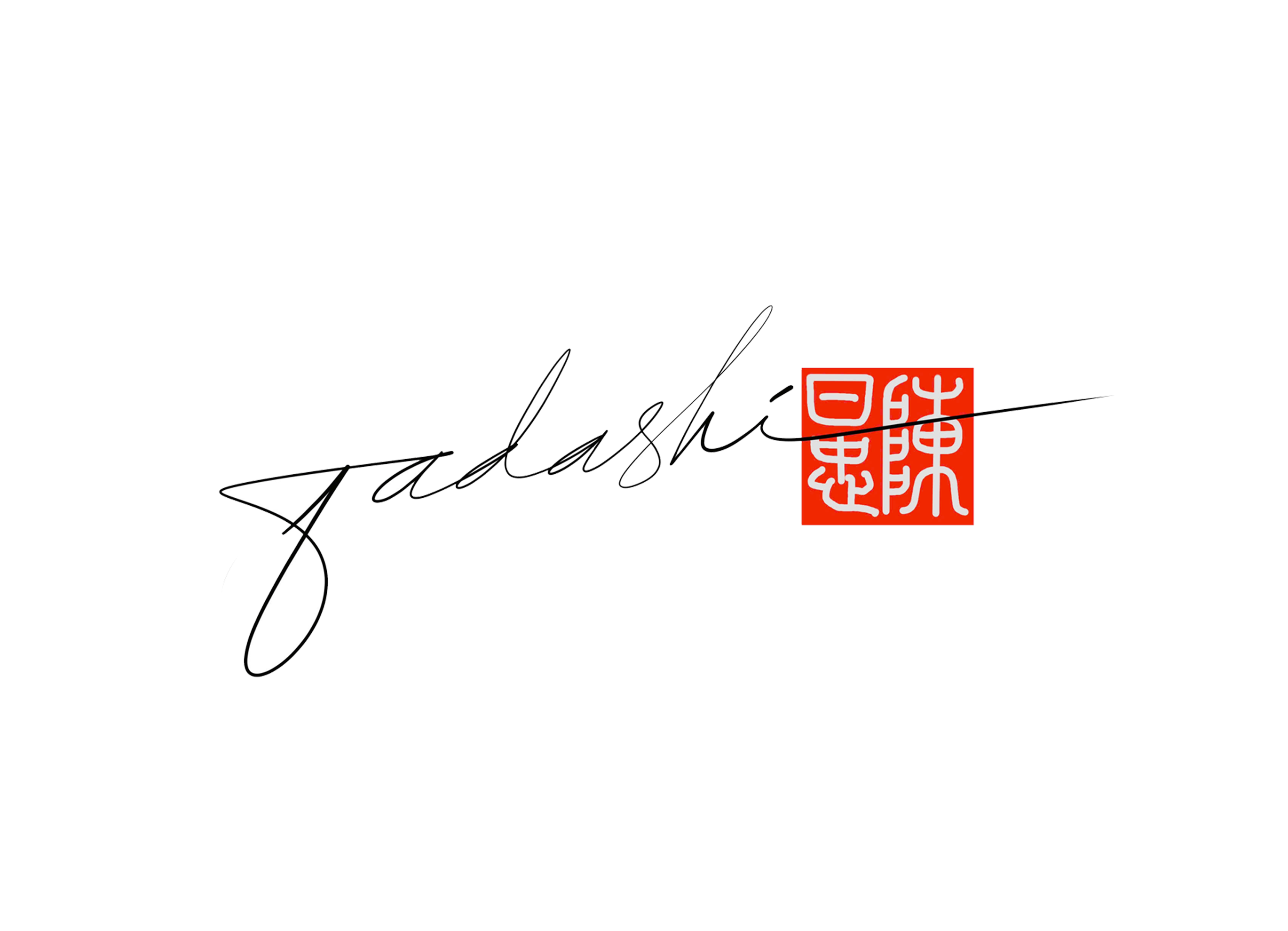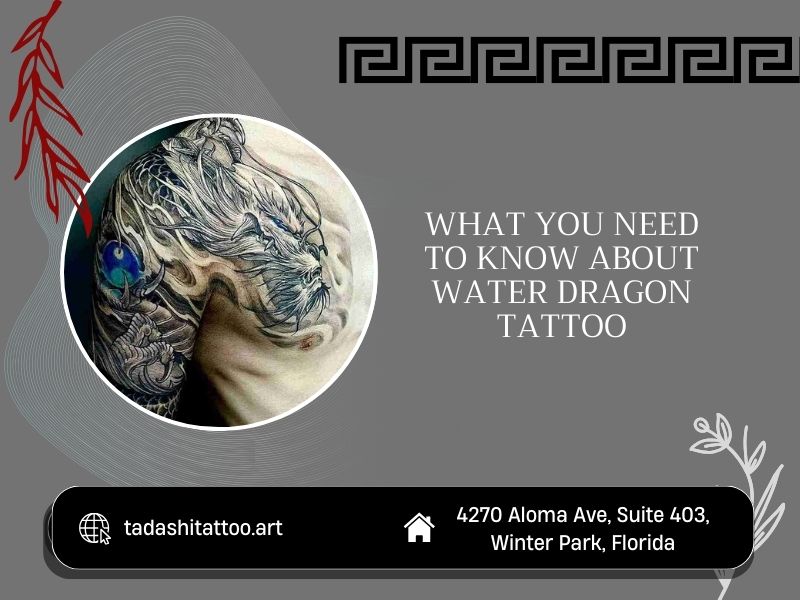A powerful symbol of wisdom and strength, the water dragon has captivated the tattoo world, becoming a top choice for many. But a water dragon tattoo isn’t just beautiful; it’s steeped in deep cultural and personal meaning. Whether you’re seeking inspiration or simply want to uncover the layers of its symbolism, this article offers a comprehensive guide and fresh perspective.
1. Decoding the Water Dragon Tattoo: A Symbol of Power, Wisdom, and Intuition
Water dragon tattoos are much more than just beautiful art; they are a powerful symbol representing a blend of elemental strength, profound wisdom, and deep emotional connection. Revered in East Asian cultures, the water dragon is a benevolent and masterful creature that controls water, weather, and the spiritual realm.
Choosing a water dragon tattoo can signify a personal connection to several key themes:
1.1. Embracing Change and Transformation
The water dragon’s dual nature—thriving both on land and in water—makes it a perfect symbol for adaptability. It represents the ability to navigate life’s challenges with grace and resilience. Moreover, its legendary transformation from a Koi fish embodies a journey of perseverance and personal growth.
1.2. Connecting with Inner Wisdom
Since the water element is linked to emotions and the subconscious, a water dragon tattoo often reflects a deep sense of intuition and emotional intelligence. It symbolizes a wearer’s connection to their inner self and a desire for ancient, spiritual knowledge.
1.3. A Balanced Force of Power
While the dragon is a timeless emblem of strength, the water element adds a layer of tranquility and balance. This tattoo represents a powerful yet calm force, a protector who is both formidable and compassionate. In East Asian mythology, water dragons are seen as guardians of humanity and sources of good fortune, a stark contrast to their Western counterparts.
1.4. Symbol of Prosperity and Luck
Historically, dragons in East Asian cultures have been powerful symbols of prosperity and good fortune, often revered for their control over rain and rivers essential for a bountiful harvest. For those born under the Chinese zodiac sign of the Water Dragon, the tattoo is a personal nod to their adaptable and intelligent nature.
In the end, the true meaning of a water dragon tattoo is a personal journey. It can be a testament to overcoming hardship, a tribute to emotional depth, or a simple representation of a balanced and powerful spirit.
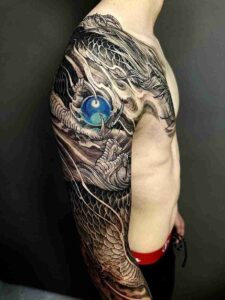
2. 15+ Cool Water Dragon Tattoo Designs
A water dragon tattoo can be as unique as you are. With countless styles and sizes to choose from, each design tells its own story. Below, we’ve compiled a list of creative water dragon tattoo ideas, exploring various artistic styles, design elements, and placements to spark your inspiration.
2.1. Japanese Irezumi Sleeve:
Imagine a powerful, fluid Japanese dragon in classic blues and blacks, coiling around your arm. It’s a striking scene of strength and grace, set against a backdrop of powerful waves and delicate cherry blossoms.
2.2. The Chinese Azure Dragon:
This majestic, twisting dragon is a symbol of immense power. With its elegant whiskers and claws, it’s often shown guarding a precious pearl—a timeless design that captures ancient Chinese lore.
2.3. The Koi to Dragon Journey:
This tattoo tells a story of incredible perseverance. It beautifully captures the moment a determined Koi fish transforms into a mighty dragon, making it a perfect symbol for anyone who has overcome a great struggle.
2.4. The Regal Thai Naga:
Drawing from Thai folklore, this design features the Naga, the legendary king of snakes. The intricate, decorative patterns make for a stunning, stylized piece that is both regal and mysterious.
2.5. Minimalist Dragon Outline:
Sometimes, less is more. This elegant design uses a single, fine line to create a subtle yet beautiful dragon silhouette, perfect for a discreet tattoo on the wrist or behind the ear.
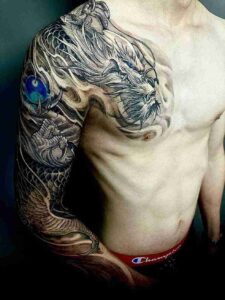
2.6. Watercolor Dragon:
A modern twist on a classic. This design uses vibrant, flowing colors to give the dragon a soft, dreamlike quality, as if it’s gracefully dissolving into a splash of blues and purples.
2.7. Geometric Dragon:
For a bold, contemporary look, this tattoo uses clean geometric shapes to create a stylized dragon. It’s a great choice for those who want a sharp, modern piece that stands out.
2.8. The Infinity Dragon:
This tattoo beautifully merges ancient symbolism with a modern twist. An Eastern-style dragon coiled into an infinity symbol represents eternal wisdom and the cyclical nature of life.
2.9. Photorealistic Water Dragon:
A true masterpiece of detail. This style brings a water dragon to life with incredibly realistic scales, textures, and facial expressions, best suited for a large-scale piece.
2.10. Dynamic Dragon with Waves:
Capture the raw power of the ocean with this design. The artist can add stunning detail to the splashing water and foamy waves, creating a tattoo that feels full of movement and life.
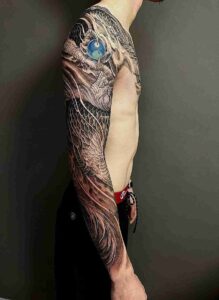
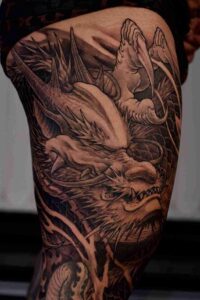
2.11. Dragon & Floral Fusion:
This design combines the dragon’s immense power with the delicate beauty of flowers like lotuses or peonies, creating a stunning visual that symbolizes both strength and renewal.
2.12. Spine Tattoo:
A perfect fit for a long, slender water dragon. This tattoo follows the natural curve of the spine, creating a flowing and visually stunning piece.
2.13. Arm Wrap:
A popular and classic choice. A traditional or modern dragon coils gracefully around the arm, with the head at the top and the tail swirling down, creating a striking visual statement.
2.14. Hand or Finger Tattoo:
A small, powerful statement. A water dragon on the hand or a subtle silhouette on the finger can be a beautiful and personal reminder of your inner strength.
2.15. Chest Piece:
A powerful, protective statement. A dragon wrapping across the chest, with its head and claws raised, is a bold and balanced design that symbolizes guardianship.
2.16. Elemental Showdown:
For a truly epic piece, this design can depict a water dragon battling another element, like a fiery dragon or a tiger. It’s a powerful symbol of the balance between opposing forces.
To conclude, the water dragon tattoo stands as a potent symbol of protection, strength, and wisdom. As you consider this design, it’s crucial to understand the cultural significance of dragons and ensure their symbolism resonates with you personally. Even more vital is finding a skilled tattoo artist who can bring your vision to life, as a stunning water dragon tattoo is more than just a picture—it’s a narrative that tells your unique story.
